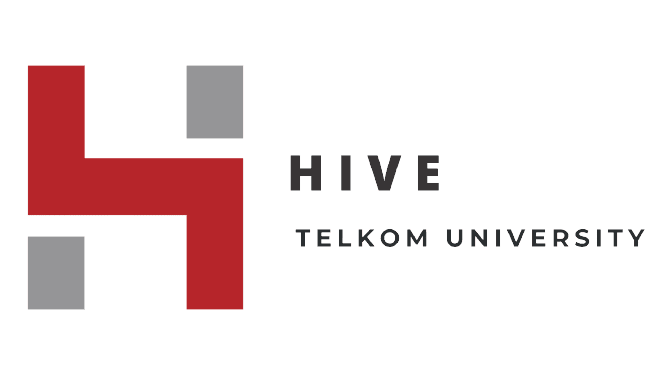Uncategorized @id
3 hari ago
Telkom University Kampus Purwokerto Wisuda 343 Mahasiswa
PURWOKERTO, iNewsPurwokerto.id – Telkom University Kampus Purwokerto kembali mencetak sejarah dengan meluluskan 343 mahasiswa dalam…
Uncategorized @id
3 hari ago
Telkom University Purwokerto Wisuda Ratusan Mahasiswa, Siap Wujudkan Visi Kampus Wirausaha Nasional – Metro Jateng
Telkom University Purwokerto Wisuda Ratusan Mahasiswa, Siap Wujudkan…
Uncategorized @id
4 hari ago
Telkom University Purwokerto Wisuda 343 Mahasiswa, Tekankan Konsep SAFE AI
TRIBUNBANYUMAS.COM, PURWOKERTO – Sebanyak 343 mahasiswa Telkom University (Tel-U) Kampus Purwokerto resmi diwisuda dalam Wisuda Periode…
Uncategorized @id
4 hari ago
Dosen Telkom University Bekali Karang Taruna Tamansari Pengelolaan Konten Website
Bandung, JurnalPost.com – Telkom University melanjutkan komitmen pemberdayaan masyarakat digital melalui program Pengabdian kepada Masyarakat…
Uncategorized @id
4 hari ago
Telkom University Surabaya Bangun Website UMKM Cerdas Tingkatkan Efisiensi Operasional Kampoeng Ilmu Surabaya – KilasJatim.com
Telkom University Surabaya dengan kegiatan pengabdian masyarakat bertajuk “Pembangunan Website UMKMCerdas untuk Peningkatan Efisiensi Operasional…
Uncategorized @id
5 jam ago
Telkom University Surabaya Edukasi Masyarakat Lewat Komik Interaktif “The White Swindler
Diunggah pada: 4 Juli 2025 12:53:31 53 Jatim Newsroom — Telkom University Surabaya menghadirkan komik…
Uncategorized @id
15 jam ago
Mau Kuliah Gratis di Telkom University? Ini Syarat Beasiswa S1 Telekomunikasi!
Telkom University kembali membuka kesempatan bagi siswa-siswi berprestasi di seluruh Indonesia untuk menikmati program beasiswa…
Uncategorized @id
1 hari ago
Kompasiana.comTelkom University Tingkatkan Kompetensi Digital Kader Posyandu Desa Cibiru Wetan – Kompasiana.comBandung, 15 Juni 2025 — Dalam rangka mendukung transformasi digital layanan kesehatan masyarakat, Telkom University melaksanakan kegiatan….1 hari lalu
Kompasiana.comTelkom University Tingkatkan Kompetensi Digital Kader Posyandu Desa Cibiru Wetan – Kompasiana.comBandung, 15 Juni 2025…
Uncategorized @id
2 hari ago
Dosen Telkom University Perkuat Literasi Digital Masyarakat Tamansari Melalui Pelatihan Website
Bandung, JurnalPost.com – Telkom University melalui program Pengabdian kepada Masyarakat (Abdimas) kembali menegaskan komitmennya dalam…
Uncategorized @id
2 hari ago
Telkom University Dinobatkan Kampus Paling Produktif soal Penelitian dan Pengabdian
Telkom University raih penghargaan dari LLDIKTI Wilayah IV. Foto: Tel-U KOSADATA — Telkom University (Tel-U)…
Uncategorized @id
3 hari ago
Telkom University Kampus Purwokerto Wisuda 343 Mahasiswa
PURWOKERTO, iNewsPurwokerto.id – Telkom University Kampus Purwokerto kembali mencetak sejarah dengan meluluskan 343 mahasiswa dalam…
Uncategorized @id
3 hari ago
Telkom University Purwokerto Wisuda Ratusan Mahasiswa, Siap Wujudkan Visi Kampus Wirausaha Nasional – Metro Jateng
Telkom University Purwokerto Wisuda Ratusan Mahasiswa, Siap Wujudkan…
Uncategorized @id
4 hari ago
Telkom University Purwokerto Wisuda 343 Mahasiswa, Tekankan Konsep SAFE AI
TRIBUNBANYUMAS.COM, PURWOKERTO – Sebanyak 343 mahasiswa Telkom University (Tel-U) Kampus Purwokerto resmi diwisuda dalam Wisuda Periode…
Uncategorized @id
4 hari ago
Dosen Telkom University Bekali Karang Taruna Tamansari Pengelolaan Konten Website
Bandung, JurnalPost.com – Telkom University melanjutkan komitmen pemberdayaan masyarakat digital melalui program Pengabdian kepada Masyarakat…
Uncategorized @id
4 hari ago
Telkom University Surabaya Bangun Website UMKM Cerdas Tingkatkan Efisiensi Operasional Kampoeng Ilmu Surabaya – KilasJatim.com
Telkom University Surabaya dengan kegiatan pengabdian masyarakat bertajuk “Pembangunan Website UMKMCerdas untuk Peningkatan Efisiensi Operasional…
Uncategorized @id
5 jam ago
Telkom University Surabaya Edukasi Masyarakat Lewat Komik Interaktif “The White Swindler
Diunggah pada: 4 Juli 2025 12:53:31 53 Jatim Newsroom — Telkom University Surabaya menghadirkan komik…
Uncategorized @id
15 jam ago
Mau Kuliah Gratis di Telkom University? Ini Syarat Beasiswa S1 Telekomunikasi!
Telkom University kembali membuka kesempatan bagi siswa-siswi berprestasi di seluruh Indonesia untuk menikmati program beasiswa…
Uncategorized @id
1 hari ago
Kompasiana.comTelkom University Tingkatkan Kompetensi Digital Kader Posyandu Desa Cibiru Wetan – Kompasiana.comBandung, 15 Juni 2025 — Dalam rangka mendukung transformasi digital layanan kesehatan masyarakat, Telkom University melaksanakan kegiatan….1 hari lalu
Kompasiana.comTelkom University Tingkatkan Kompetensi Digital Kader Posyandu Desa Cibiru Wetan – Kompasiana.comBandung, 15 Juni 2025…
Uncategorized @id
2 hari ago
Dosen Telkom University Perkuat Literasi Digital Masyarakat Tamansari Melalui Pelatihan Website
Bandung, JurnalPost.com – Telkom University melalui program Pengabdian kepada Masyarakat (Abdimas) kembali menegaskan komitmennya dalam…
Uncategorized @id
2 hari ago
Telkom University Dinobatkan Kampus Paling Produktif soal Penelitian dan Pengabdian
Telkom University raih penghargaan dari LLDIKTI Wilayah IV. Foto: Tel-U KOSADATA — Telkom University (Tel-U)…















